How to make Fabric Twine from scraps
Do you have an abundance of fabric scraps in your collection? Or perhaps you’re seeking enjoyable and fun scrap fabric projects? Take the opportunity to declutter your stash and put those cherished scraps to good use with this delightful fabric twine tutorial!
How to create Fabric twine
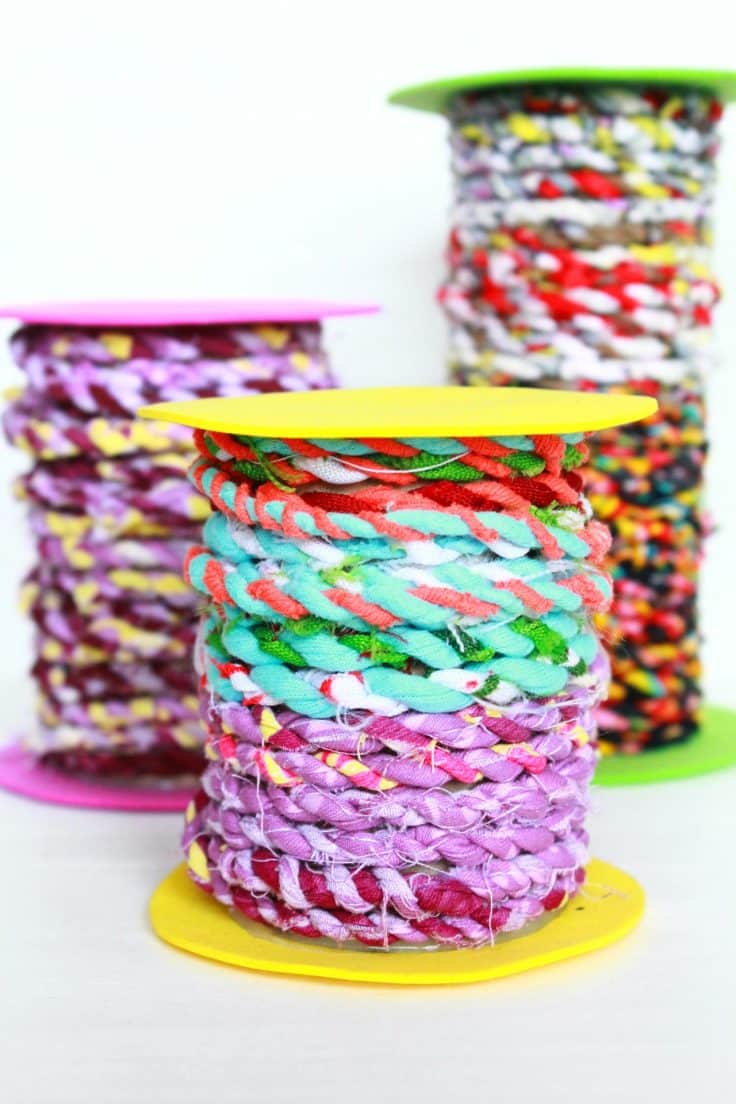
Hey, guys! Today I’ll be sharing a super fun project for all you sewing fans out there! I’m pretty sure you have an overabundance of fabric scraps, just as myself; and there’ve been many times when you thought about simply throwing them away because you couldn’t see anything good coming out of a big pile of fabric strips that are way too thin to use in sewing projects.
Well, you were wrong! Here I’ll show you how to make your own fabric twine so you can create tons of beautiful projects with all those scraps you’ve been saving for ages! Nothing goes to waste when it comes to fabric, right? And this scrap fabric twine project is perfect for this kind of scraps!
More scrap projects you might like:
- Chicken fabric weights
- Yoyo flowers
- DIY fabric bunting
- Lined zipper pouch
- Small lavender bags
- Reusable fabric bowl cover
- Quilted sewing mat with thread catcher
- Triangle pattern weights
- Wine glass coasters
- Fabric covered buttons
- Scrappy tulip keychain
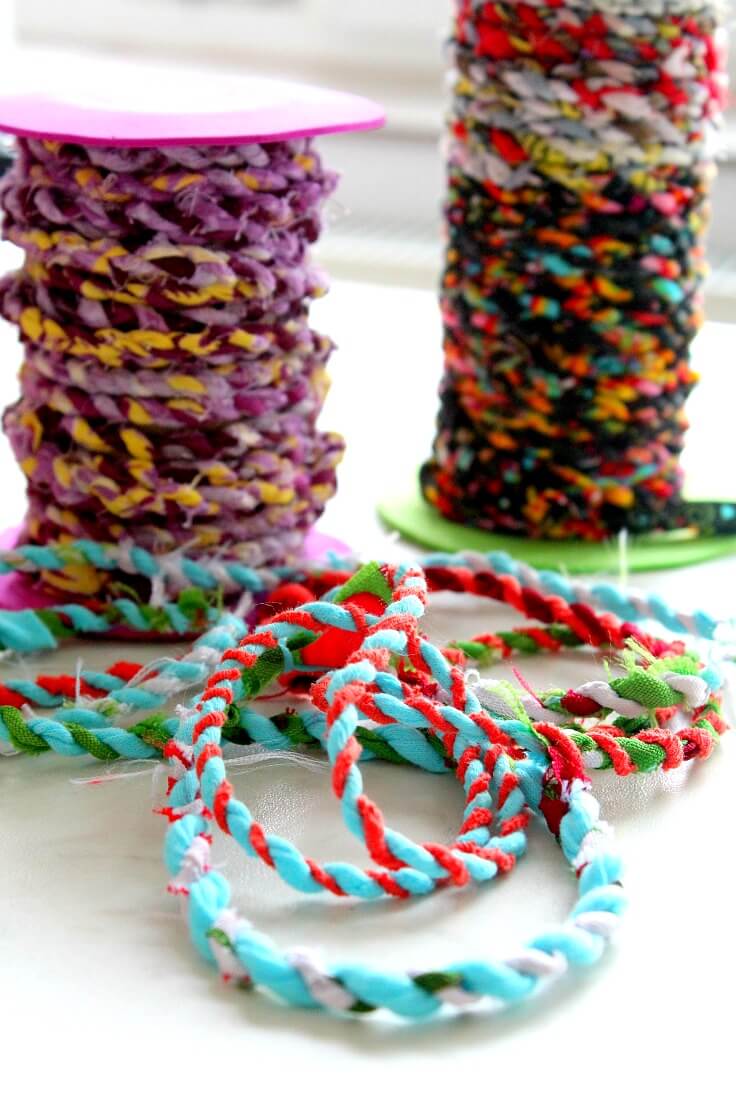
But here’s a fair warning! Making twine or fabric yarn as some call it, can get pretty addictive and pretty soon you’ll find yourself thinking about turning your entire fabric stash into scraps. Resist the urge, don’t turn yourself into a fabric murderer, you’ll eventually get there without sacrificing your beautiful fabric! Plus making fabric twine takes time, like lots of it and meanwhile you can just go ahead with your other sewing projects and save all the resulting scraps.
I find that not many things are prettier than all different fabrics twisted and wrapped up together! I have a rug in my bathroom made out of t-shirt scraps, twisted and then waved together and I would love to make a replica but in a slightly different design.
Can I use different fabrics to make fabric twine?
In my experience, I found that using various fabrics yields satisfactory results. I was eager to make use of as many fabric scraps as possible within a limited timeframe, so I dove into my fabric stash without much consideration for the fabric types. My focus was mainly on the colors and weight of the fabrics.
For instance, instead of combining lightweight fabrics with medium-weight ones, I opted to use fabrics of similar weights. However, I did mix stretch fabrics with cottons or canvas. I also took care to consider the width of the fabric strips, using scraps that were of similar width.
And it turned out great! I was then able to sew my fabric twine into these beautiful trivets with no problems.
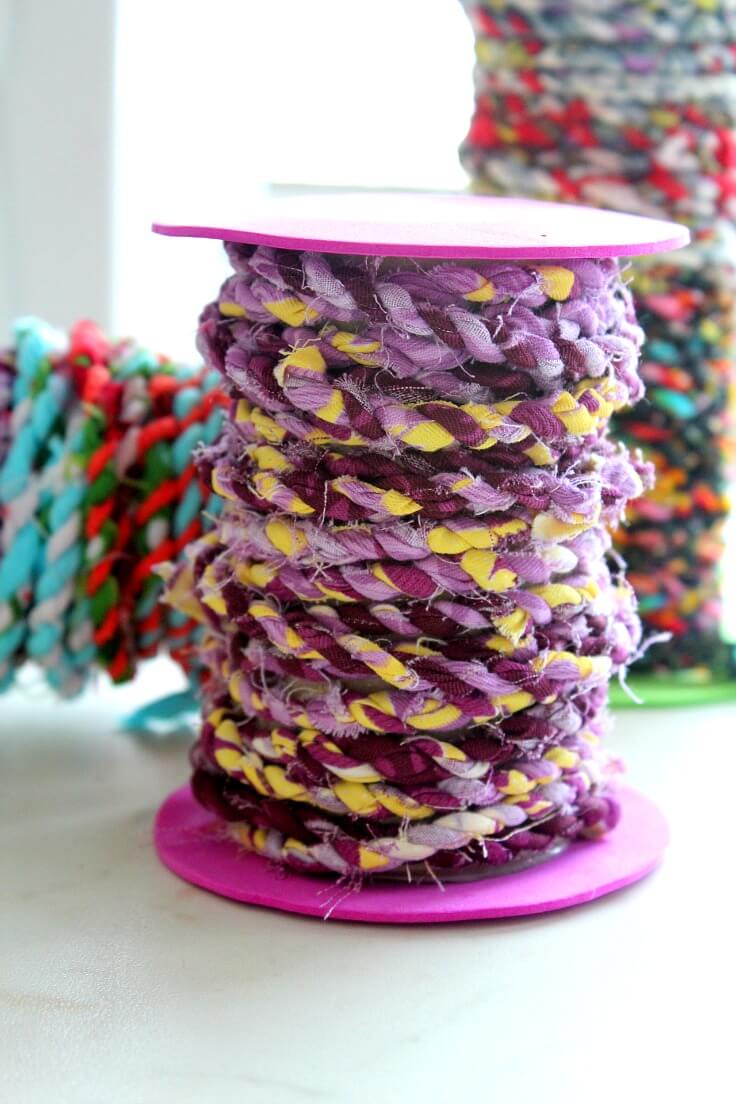
What are some examples of projects that can be made with fabric twine?
- Coasters
- Placemats
- Trivets
- Baskets/bins
- Rugs/mats
- Decorative garlands or banners
- Jewelry (bracelets, necklaces)
- Keychains or bag charms
- Gift wrapping accents/twist ties
The possibilities are endless! Just use your imagination and get creative with your fabric twine. Plus, not only is it a great way to use up your fabric scraps, but it also adds an interesting and unique texture to your projects.
How long does it take to make fabric twine?
The time it takes to make fabric twine varies depending on the thickness and length of your strips, as well as how fast you are at twisting the fabric. It can take anywhere from a few hours to a few days for larger projects. But don’t worry, the end result is definitely worth the time and effort! Plus, it can be a relaxing and therapeutic activity.
Is there a limit to how many fabrics can be used in one piece of twine?
There is no limit to how many fabrics can be used in one piece of fabric twine. In fact, the more variety you have, the more unique and interesting your twine will look. Just keep in mind that using too many different weights or widths of fabric strips may affect the overall strength and durability of the twine.
Are there any tips for choosing which fabrics to use together?
Here are a few tips to keep in mind when choosing which fabrics to use together for your fabric twine:
- Stick to fabrics with similar weights and widths for a more cohesive look.
- Use fabrics in complementary or contrasting colors for added visual interest.
- Consider the purpose of your project and choose fabrics accordingly (e.g. sturdier fabrics for baskets, softer fabrics for rugs).
- Don’t be afraid to experiment and mix different fabric types, but keep in mind that some may not work well together due to their stretch or stiffness.
While super enjoyable and relaxing, fabric twine is super time consuming, especially when you need it for large projects so it’ll probably take me a while before I’m able to share this project with you, if ever. Meanwhile, here’s how to make fabric twine!
How to Make Twine

Materials:
- fabric scraps in assorted colors (mine are about 1/2″ wide)
- scissors
- large spools (preferably) or something else large enough to wind your twine on to (I made my own).
- finger moistener (optional but very helpful)
How do you make a fabric rope?
- Before you start here’s a tip: it helps to have moist fingers, it will make the process a little faster and the twine will end up tighter and stronger. So keep a finger moistener on hand, just in case.
- Gather all your fabric scraps and cut or tear into strips of different length. I didn’t have the patience to use my scissors on all so I ripped most of the strips.
- Start by using one short and one long strip and tie them together with a knot.

- Slide the knot under something heavy to keep strips still (like a stack of books, or a large flower pot or even your sewing machine).
- Twist each strip towards your right.
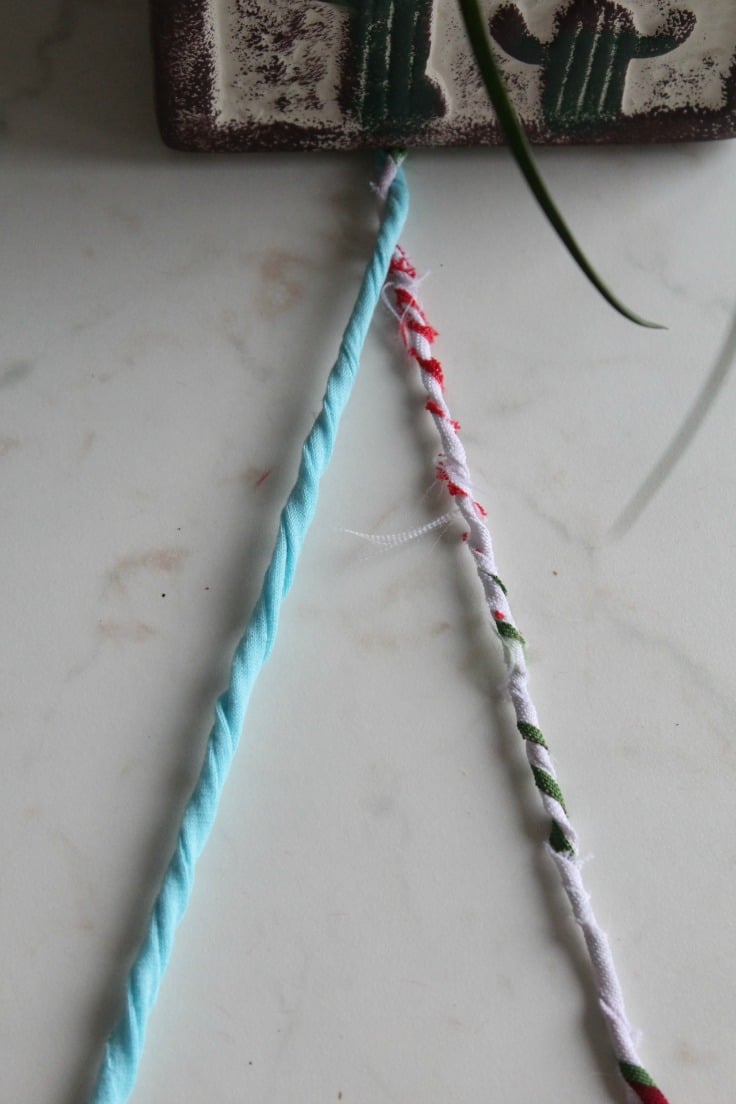
- Then twist each strip around each other. Work in small areas.

- Follow the above steps until you finish the short strip.
- To add another strip and join, just leave a tail of about 1″ and wrap the new strip around it.
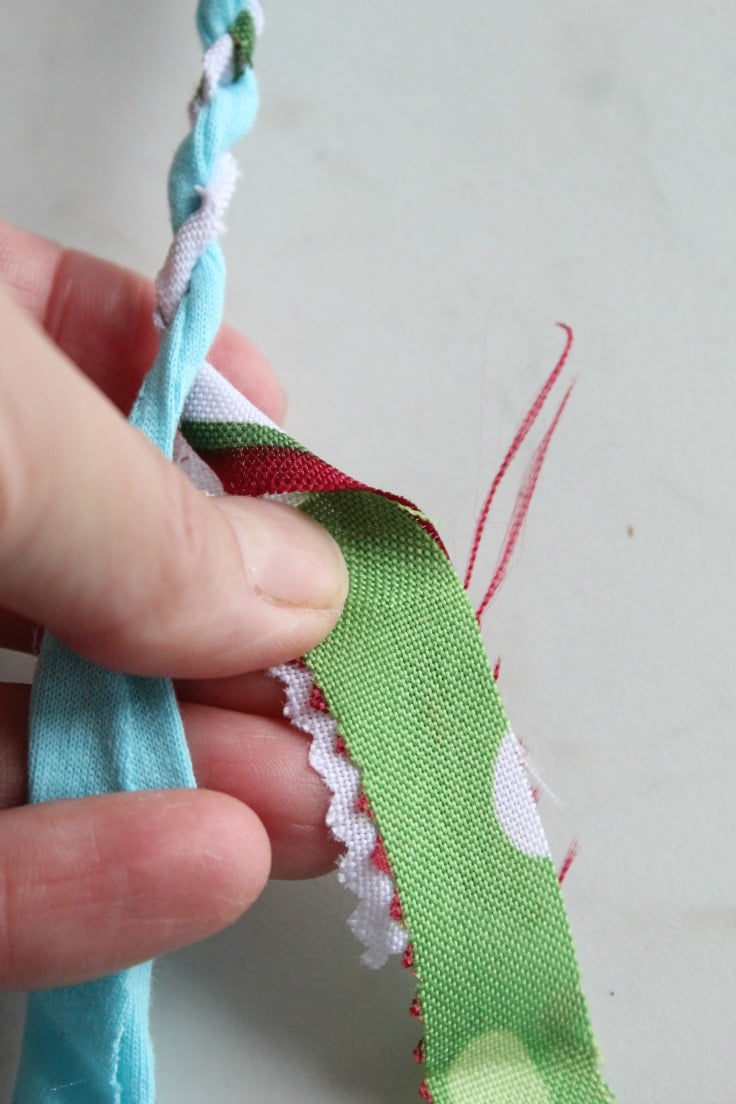
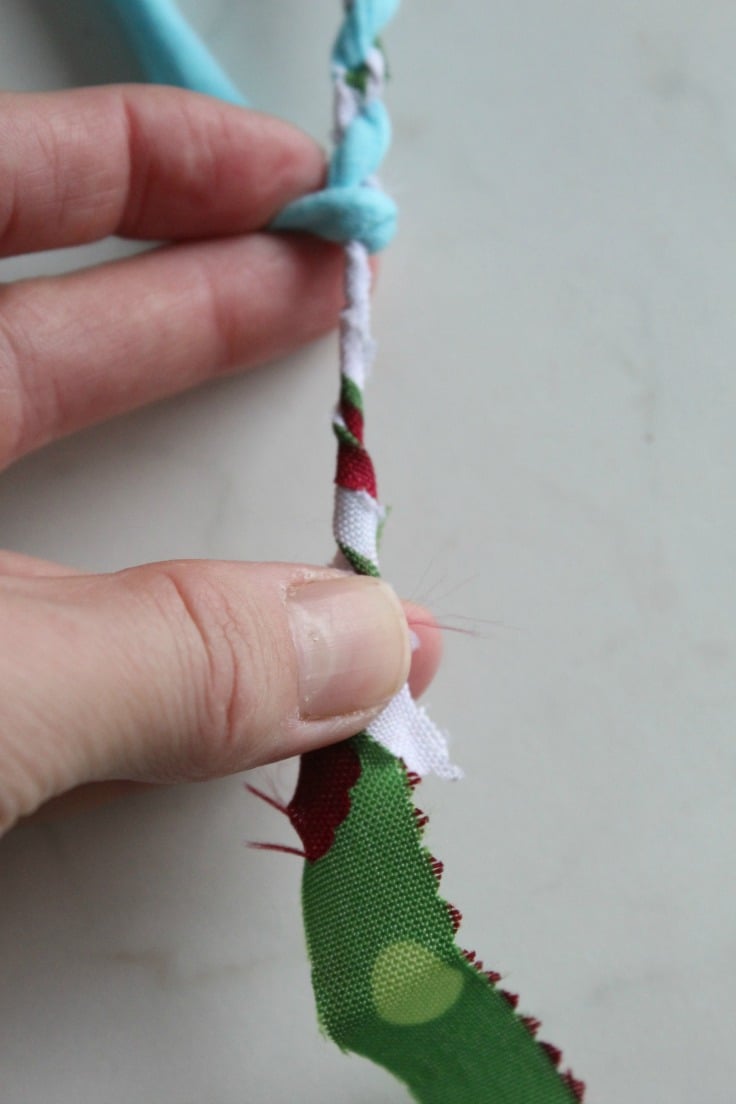
- Make sure both your strips don’t finish at the same time or your join may be weakened; that’s why is best to start with one short and one long strip.
- When done, end with another knot.
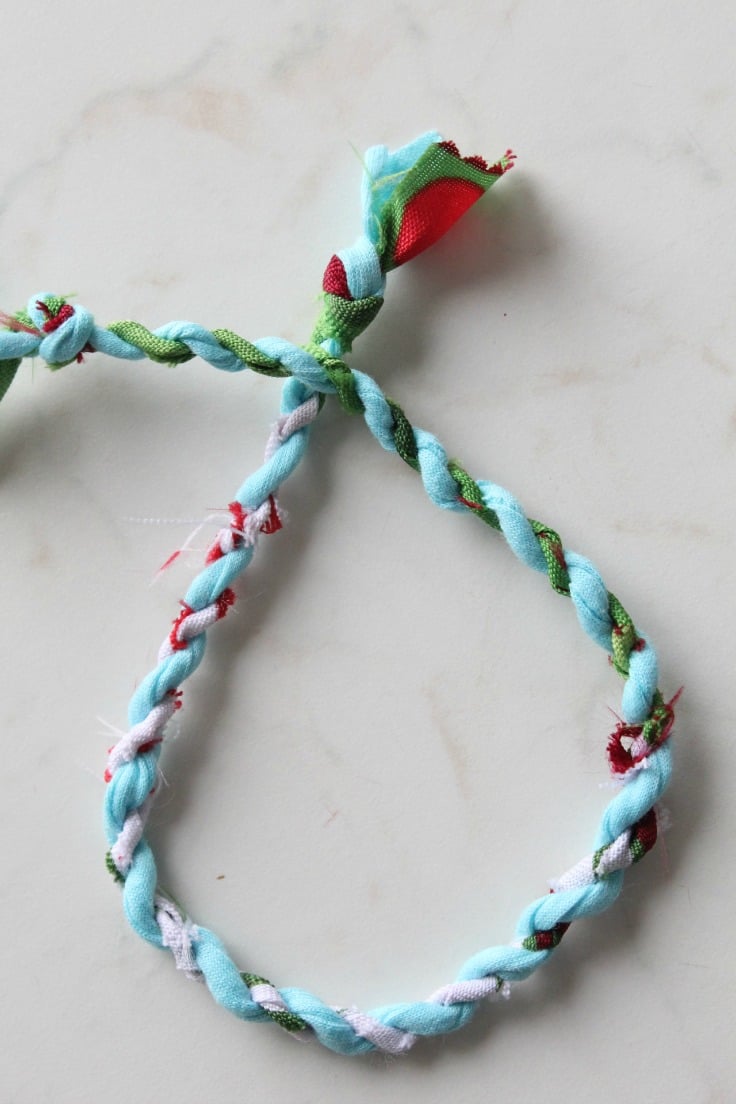
- Then just wrap the twine around spools.

And that’s it! You now have your very own handmade fabric twine, made from all those scraps you thought would never be useful. This project is not only a great way to upcycle and reduce waste, but also a fun and relaxing activity for any sewing enthusiast. So don’t throw away those scraps, turn them into beautiful twine and stitch it into beautiful, creative projects! Happy crafting!
Article may contain Amazon & affiliate links. As an Amazon Associate I earn from qualifying purchases at no additional cost to you.


ABOUT PETRO
Hi, I’m Petro, author and founder of Easy Peasy Creative Ideas. Sewist, crafter, avid DIY-er, foodie, photographer, homemaker and mommy to one. I’m an expert at coming up with quick, clever sewing tips, recycling crafts and simple, easy recipes! You can find my ideas featured in reputable publications such as Country Living, Good House Keeping, Yahoo News, WikiHow, Shutterfly, Parade, Brit & Co and more. Thanks for stopping by and hope you’ll stay for a while, get to know me better and come back another time. Stick around for real fun projects! Read more…